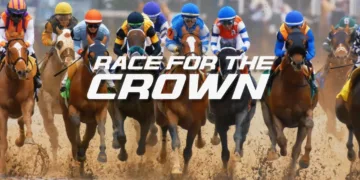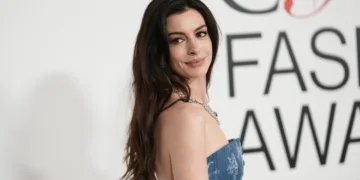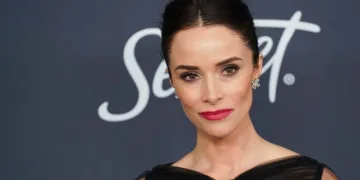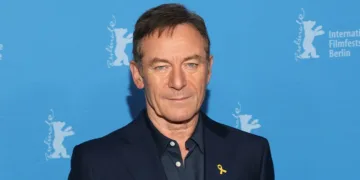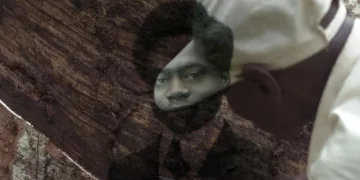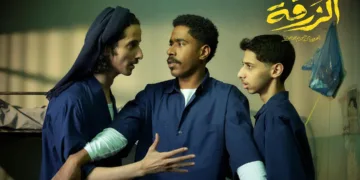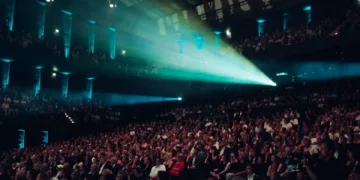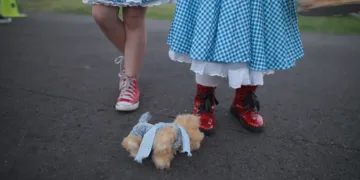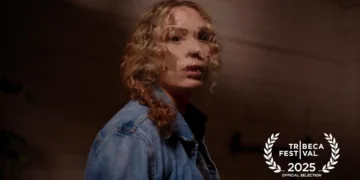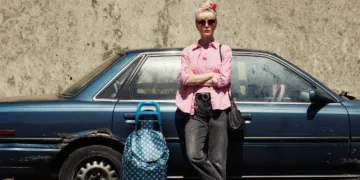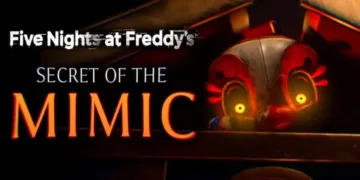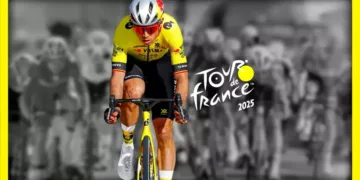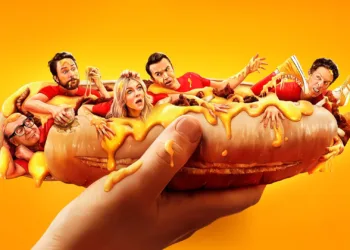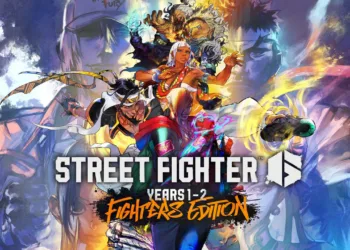Race for the Crown pulls back the velvet rope on thoroughbred horse racing, a world where the mint juleps flow as freely as the multimillion-dollar investments. The series breathlessly follows the 2024 Triple Crown season, a three-race gauntlet composed of the Kentucky Derby, the Preakness Stakes, and the Belmont Stakes. This is not just a show about fast horses; it is a character study of the ambitious humans chasing them.
The narrative is fueled by the combustible mixture of dynastic owners, old-school trainers, and unflappable jockeys, all converging on the track in a high-pressure pursuit of sporting immortality. From the pristine barns to the thundering finish line, the series frames the “Sport of Kings” as an arena of immense financial risk and even greater personal ambition, where fortunes and legacies are made or broken in two minutes.
Jockeys, Juggernauts, and a Tanning Bed
The series understands that the real race is often between the personalities in the owners’ boxes, and it leans into this conflict with gusto. It dedicates significant screen time to a cast of flamboyant proprietors whose egos are as finely tuned as their prize-winning colts. We meet Mike Repole, a billionaire whose raw, almost desperate intensity to win feels like a force of nature.
He is contrasted with Michael Iavarone, a man who travels with an entourage and praises his high-end tanning bed, representing a culture of performative luxury. These men are not just participants; they are the show’s primary engines of conflict, turning every race into a personal referendum on their status and judgment. Their presence ensures the drama is always at a fever pitch.
In a welcome contrast, the show finds its heart in the professionals with actual dirt under their fingernails. The narrative is significantly brightened by Frankie Dettori, the legendary Italian jockey on a quest to conquer the American circuit late in his celebrated career. His infectious charm and moments of wide-eyed culture shock—marveling at the sheer size of an American rotisserie chicken—provide essential comic relief and humanity.
The show’s most satisfying arc belongs to the tandem of trainer Kenny McPeek and jockey Brian Hernandez Jr., a pair of quiet, down-to-earth horsemen whose stunning success feels like a victory for competence over cash. The image of Hernandez humbly carrying his own boots after winning the Derby says more than any boastful monologue. The series also wisely carves out space for trailblazers like jockey Katie Davis, who navigates the immense challenges of balancing motherhood with a dangerous profession, adding another welcome layer of authentic human interest.
Every Frame a Finish Line
From a technical standpoint, Race for the Crown is a masterclass in the modern sports documentary, clearly borrowing from the high-gloss playbook of its producers. The cinematography is nothing short of spectacular, capturing the raw power and elegance of the equine athletes with artistic flair.
The editing is razor-sharp, cutting between slow-motion shots of thundering hooves, the determined faces of the jockeys, and the vibrant blur of the silks to build maximum tension. This visual dynamism is amplified by a sound design that immerses the viewer in the experience—the roar of the crowd, the frantic shouts between riders, and the rhythmic pounding of the dirt track create a potent, visceral symphony of competition.
This slick presentation serves a crucial purpose: it makes the often-insular world of horse racing incredibly accessible. On-screen graphics deftly explain the complex points system for Derby qualification, while the narrative structure patiently walks viewers through the Triple Crown season. The series functions as a “Horse Racing 101” course wrapped in the packaging of a prestige drama, ensuring even a complete novice is captivated.
Beyond the spectacle of race day, the camera finds beauty in the quiet moments that define the sport: a groom’s gentle hands, the nervous energy of the paddock before a race, a foal taking its first steps in a field of bluegrass. These intimate details provide a thoughtful texture, proving the show’s creators understand that the story is not just at the finish line, but in every step it takes to get there.
The Horse in the Room
For all its success in capturing the human drama, the series frequently stumbles over a central irony: the horses themselves are often reduced to beautiful, four-legged MacGuffins. They are the high-priced assets to be acquired, the living vehicles for human ambition, but rarely are they explored as the central athletes with their own stories.
This choice frames the sport as a human-centric game of chess where the horses are merely valuable pieces, largely ignoring the deep partnership and unspoken communication that purists would argue is the true soul of racing. The awe-inspiring animals who do the actual running are too often just glamorous set dressing.
This sanitized approach extends to the sport’s larger controversies. The show’s reluctance to engage with the dark side of racing is its most significant flaw. It acknowledges trainer Bob Baffert’s suspension from Churchill Downs, but treats him more like a roguish anti-hero than a figure at the center of a serious animal welfare and integrity crisis. The real-world dangers of catastrophic injuries and fatalities are left entirely on the cutting room floor.
What remains is a polished, TV-ready version of the industry, scrubbed clean of its most troubling realities. This creates an unbalanced narrative, where the boorish antics of the wealthiest owners command the spotlight, leaving the quieter, potentially more meaningful stories from the backstretch—the grooms, vets, and exercise riders—mostly untold. The series offers a thrilling ride, but one wonders what it might have revealed had it been willing to look inside the stables instead of just the skyboxes.
“Race for the Crown” was released on Netflix on April 22, 2025, and all six 45-minute episodes are available for streaming. The series provides an inside look at the high-stakes world of professional horse racing, with exclusive access to the personalities that drive the sport.
Full Credits
Co-Executive Producers: Jordan Bogdonavage, Tim Stampher
Executive Producers: Hillary Olsen, Ian Sambor, James Gay-Rees, Paul Martin, Warren Smith
Editor: Alex Durham
Composer: Sean Segal
The Review
Race for the Crown
Race for the Crown is a thrilling and visually stunning documentary that successfully captures the high-stakes human drama of horse racing. It excels as an accessible, entertaining introduction to the sport, driven by charismatic professionals and flamboyant owners. However, its slick presentation comes at a cost. The series deliberately avoids the sport's difficult controversies and frequently treats its magnificent equine athletes as little more than beautiful props for human ambition. It’s a compelling, but frustratingly incomplete, portrait.
PROS
- Stunning, high-end cinematography that makes the races thrilling.
- Excellent accessibility for viewers new to horse racing.
- A compelling cast of human characters, from humble jockeys to larger-than-life owners.
CONS
- The horses are often sidelined in favor of human drama.
- It almost completely ignores the controversies and dangers within the sport.
- The focus on a few wealthy, and sometimes unlikable, owners can feel repetitive.
